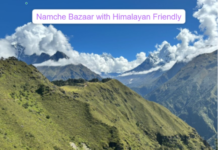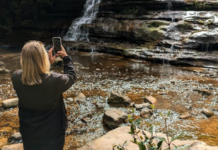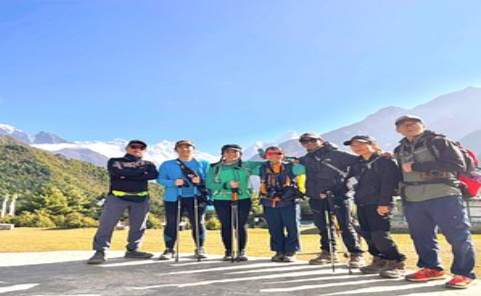Nestled in a valley surrounded by the majestic Himalayas, Kathmandu stands as Nepal’s vibrant capital city—a place where ancient traditions seamlessly blend with modern life. For travelers with limited time, a well-planned Kathmandu day tour offers an extraordinary opportunity to experience the city’s rich cultural heritage, breathtaking architecture, and spiritual significance. This comprehensive guide outlines how to make the most of your 24 hours in this fascinating Himalayan metropolis.
Morning: Sacred Temples and UNESCO Heritage Sites
Swayambhunath (Monkey Temple)
Begin your Kathmandu adventure early at Swayambhunath, one of Nepal’s most iconic Buddhist stupas. Perched atop a hill in the western part of the city, this sacred site offers panoramic views of the entire Kathmandu Valley. The complex dates back approximately 2,500 years, making it one of the oldest religious sites in Nepal.
As you climb the 365 stone steps to reach the main stupa, you’ll encounter the resident monkeys that give the temple its nickname. The central white dome represents the world, while the thirteen-tiered golden spire symbolizes the path to enlightenment. Prayer flags flutter in the breeze, carrying blessings across the valley. Take time to observe locals performing their morning rituals, spinning prayer wheels, and making offerings.
Kathmandu Durbar Square
From Swayambhunath, head to Kathmandu Durbar Square, the historical heart of the old city. This UNESCO World Heritage Site features an impressive concentration of temples, palaces, courtyards, and monuments built between the 12th and 18th centuries. Though damaged by the 2015 earthquake, significant restoration work has preserved much of its splendor.
Highlights include:
- Hanuman Dhoka Royal Palace: The former residence of Nepal’s royal family until the 19th century
- Kumari Bahal: Home to the living goddess Kumari, a young girl believed to be the incarnation of the goddess Taleju
- Kasthamandap: The wooden building that gave Kathmandu its name (though rebuilt after the earthquake)
- Jagannath Temple: Known for its erotic wood carvings on the roof struts
Consider hiring a knowledgeable local guide who can share the fascinating stories behind these structures and explain their cultural significance. The square remains a living heritage site where daily life, religious ceremonies, and historic preservation coexist.
Midday: Thamel and Authentic Nepali Cuisine
Exploring Thamel
By mid-morning, make your way to Thamel, Kathmandu’s vibrant tourist district. While primarily known as a hub for trekkers and backpackers, Thamel offers excellent shopping opportunities for authentic Nepali handicrafts, singing bowls, pashmina shawls, and thangka paintings (traditional Buddhist art).
Navigate the narrow alleys lined with shops selling everything from handcrafted jewelry to mountaineering equipment. Despite its tourist-oriented nature, Thamel retains pockets of authentic local culture, especially in its hidden courtyards and small temples tucked between commercial establishments.
Traditional Nepali Lunch
After a morning of exploration, replenish your energy with an authentic Nepali meal. The country’s traditional dish is “Dal Bhat”—a hearty plate of steamed rice, lentil soup, vegetable curry, pickles, and often a small portion of meat curry. Many restaurants in Thamel serve this staple, but for a more authentic experience, seek out local establishments where Kathmandu residents dine.
For those seeking culinary adventure, try these Nepali specialties:
- Momo: Nepali dumplings filled with spiced meat or vegetables
- Sel roti: Ring-shaped sweet bread, typically enjoyed during festivals
- Kwati: A mixed bean soup with rich flavors and nutritional value
- Gundruk: Fermented leafy greens, often served as a side dish
A traditional meal provides not just sustenance but insight into Nepal’s cultural identity and agricultural heritage.
Afternoon: Sacred Buddhist Sites
Boudhanath Stupa
After lunch, visit Boudhanath, one of the largest spherical stupas in Nepal and a UNESCO World Heritage Site. This massive structure dominates the skyline in eastern Kathmandu and serves as the center of Tibetan Buddhism in Nepal. The stupa’s design represents the Buddha’s path to enlightenment, with the all-seeing eyes of Buddha gazing in four directions.
Join pilgrims as they circumambulate the stupa in a clockwise direction, a meditative practice believed to accumulate merit. The area surrounding Boudhanath houses numerous monasteries where you can observe monks debating Buddhist philosophy or creating intricate sand mandalas.
For a deeper experience, visit one of the thangka painting schools where artists create detailed religious artworks following centuries-old techniques. Some monasteries also offer short meditation sessions for visitors interested in Buddhist practices.
Pashupatinath Temple
Just a short distance from Boudhanath lies Pashupatinath Temple, Nepal’s holiest Hindu shrine and another UNESCO World Heritage Site. Dedicated to Lord Shiva, this expansive temple complex stretches along the banks of the sacred Bagmati River.
While non-Hindus cannot enter the main temple, visitors can observe the ornate exterior architecture and witness important Hindu rituals from the opposite riverbank. The temple complex is particularly known for its open-air cremations, where Hindu funeral rites are performed according to ancient traditions. Though potentially confronting for some visitors, these ceremonies offer profound insights into Hindu beliefs about death and rebirth.
The temple grounds also house numerous smaller shrines, meditation caves, and ashrams where holy men reside. The evening aarti (fire ceremony) along the riverbank provides a mesmerizing conclusion to a visit here.
Evening: Sunset Views and Cultural Performances
Nagarkot Viewpoint
If time permits, take a late afternoon drive to Nagarkot, located about 32 kilometers east of Kathmandu. This hill station sits at an elevation of 2,175 meters and offers spectacular sunset views over the Himalayan range. On clear days, you can see Mount Everest in the distance, along with other peaks like Langtang, Dorje Lakpa, and Gauri Shankar.
The journey to Nagarkot passes through traditional villages and terraced farmlands, providing glimpses of rural Nepali life that contrast with Kathmandu’s urban landscape. Even if you can’t fit Nagarkot into your itinerary, alternative viewpoints closer to the city center, such as Swayambhunath or the Chandragiri Hills, offer beautiful sunset perspectives.
Cultural Dinner Experience
Complete your day tour with an authentic Nepali cultural experience. Several restaurants in Kathmandu offer traditional dance performances alongside dinner service. These shows typically feature dances from various ethnic groups in Nepal, including the Newari, Tamang, Sherpa, and Gurung communities.
As you enjoy your final meal in Kathmandu, reflect on the extraordinary cultural diversity you’ve witnessed throughout the day. From Buddhist stupas to Hindu temples, medieval palaces to vibrant markets, the city encapsulates Nepal’s rich heritage in a relatively compact area.
Practical Tips for Your Kathmandu Day Tour
- Transportation: Consider hiring a private driver for the day to maximize your time and avoid navigating public transportation. Alternatively, taxis are readily available but require negotiation.
- Entrance Fees: Budget approximately 3,000-4,000 Nepali Rupees for entrance fees to the main attractions.
- Clothing: Dress modestly when visiting religious sites, with shoulders and knees covered.
- Timing: Start early, ideally by 7:00 AM, to avoid crowds at popular sites.
- Hydration: Carry bottled water, as Kathmandu’s elevation (1,400 meters) can cause mild dehydration for some visitors.
Conclusion
A single day in Kathmandu merely scratches the surface of this extraordinary city’s cultural wealth. However, with careful planning, you can experience the essence of Nepal’s spiritual traditions, architectural marvels, and warm hospitality even within this limited timeframe. From the golden spires of ancient temples to the bustling energy of its markets, Kathmandu rewards visitors with unforgettable impressions and a deeper appreciation for Nepal’s unique cultural identity.
Whether your Kathmandu day tour marks the beginning of a longer journey through Nepal or serves as a brief yet meaningful encounter with Himalayan culture, the memories created will undoubtedly inspire future explorations of this remarkable region. As locals say, “Once is not enough” when it comes to experiencing the magic of Nepal.


















